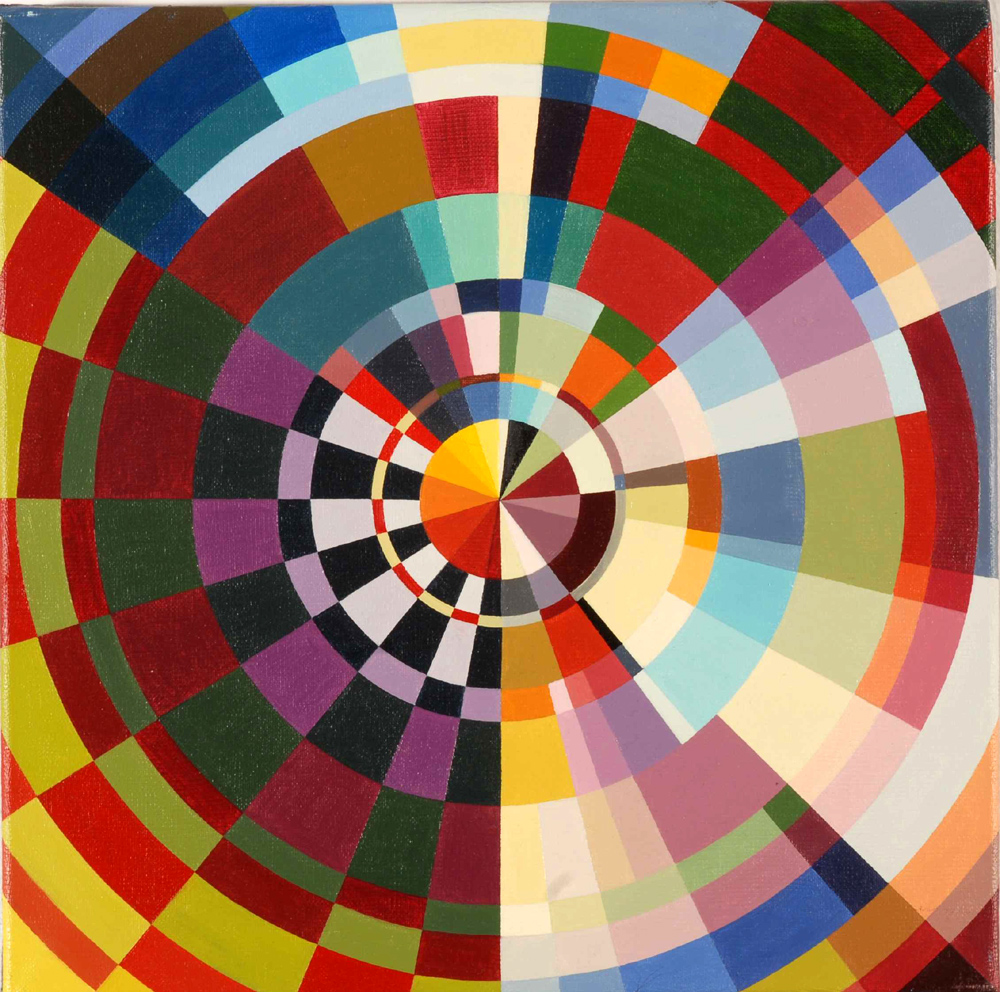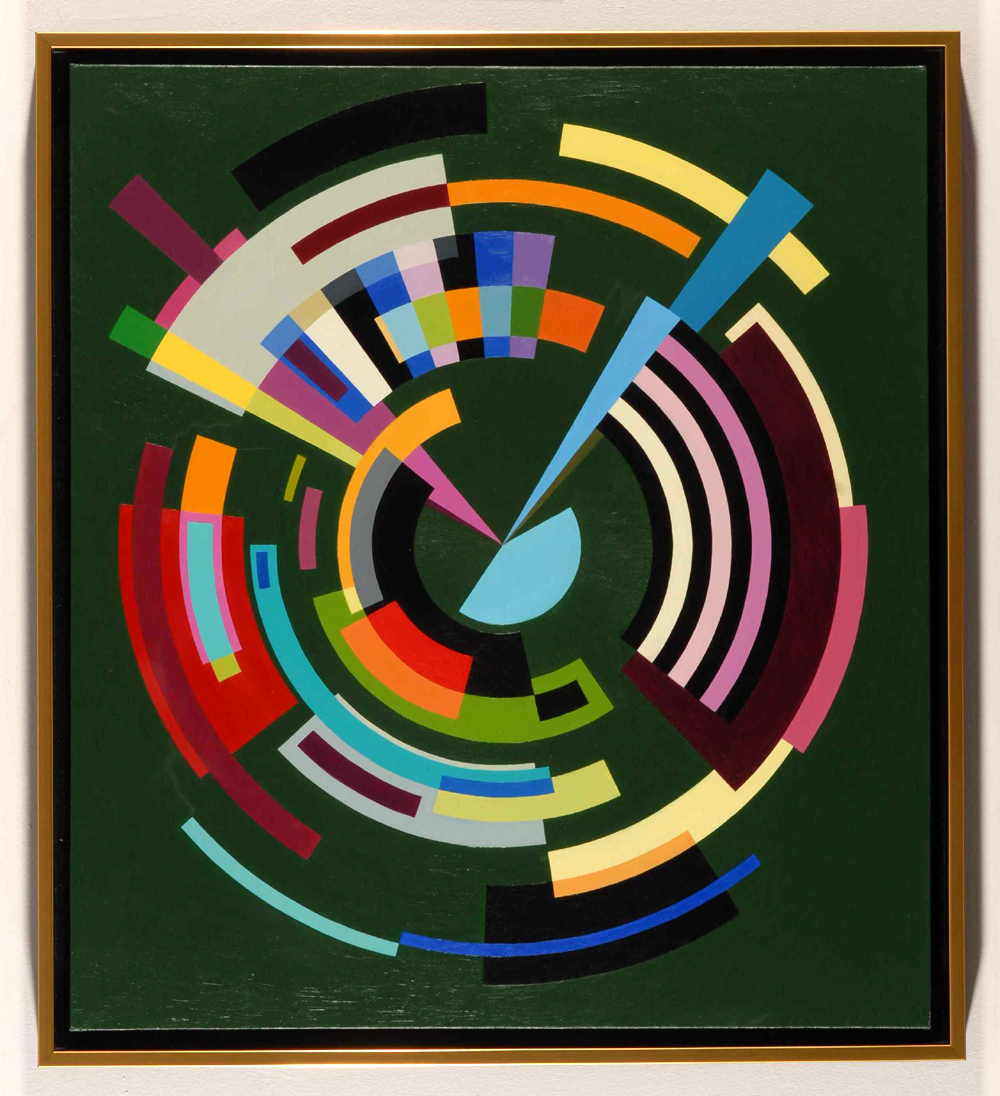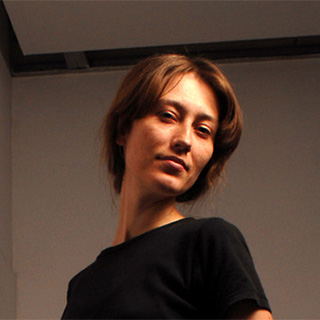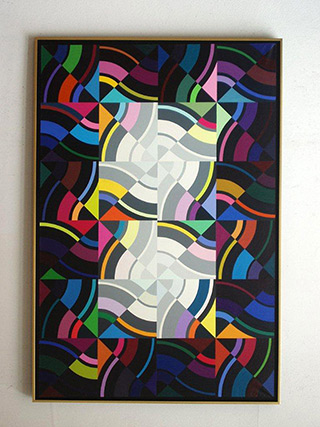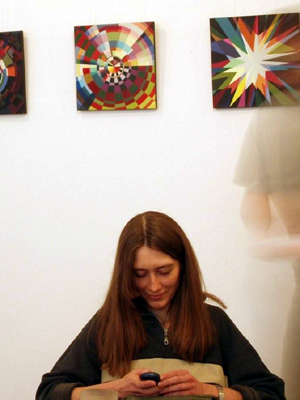Stop the Frame (Part I)
Concentric circles with multicoloured fragments, overlapping colours, luminosity, spinning impressions and kaleidoscopic volatility – the geometric compositions of Małgorzata Jastrzębska stem from the experience of the great abstractionists of the twentieth century – Robert and Sonia Delaunay, Francis Picabia and Frantisek Kupka. In her paintings the colour is the form and the motif and the luminous spheres of purple and cadmium yellow, rose and green, black and white unfold according to a rigorous structure.

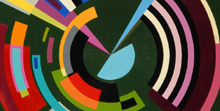
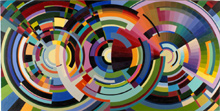
The impression of perpetual movement – the spinning circles temporarily come together into a pattern just like the pieces of coloured glass and mirrors in the kaleidoscope. As if you were saying ‘stop the frame’ knowing that right away they will spin again and the next frame will have a different pattern.
Actually, the movement was not intended – it is a coincident, a by-product. When I think about a painting, a composition is the most important ingredient, followed by a colour.
The composition is always a simple central one; while a circle, as a perfect form, helps me execute the operation in the painting. I like it when the colour is ‘only’ the colour, when it has its given part in the picture. The most important hues for me are black and white – the colour is between them. I lay one flat patch of colour next to another and suddenly I realise they co-operate with one another, and effectively the painting is not so flat. This gets me hooked on like a game. I like this.
It is hard to talk about abstraction, though.
It’s difficult. Although for me it is actually quite natural that I paint such paintings.
I have always lived in the city and do not feel the need to go on location. Staying in the same place, one can always paint what’s outside the window - a bench or some parked cars.
Mondrian, however, managed to take out from the landscape the enormous power of interaction, casting aside what is the most changeble and fragile in the world – the matter of subject. Henryk Stażewski claimed that „the world created by imagination or a chain of thoughts might seem more real than the world perceived as real”. And for me painting abstracts feels a little bit like painting myself – it gives me more satisfaction. The problem is that abstraction is not only filling up the canvas with colour. Of course I am not defying the fact that a painting should have some decorative value; it is an important function of art. Nevertheless, I demand more from painting. I do not want for my feelings to be clear in the painting, I’d rather try to liberate the emotions of the viewer, to give him/her something more than just the aestethic pleasure.
One has got to get the maximum from the minimum.
You prefer Mondrian to the orfists, rigorous and sterile technique to the spontaneous brush stroke, don’t you?
Rigor depends on personality. Just like in life there are areas of disorder and things I ignore as well as the ones which must be organized – my paintings are my reines, seeking balance, where everything must be sorted. I used to want to be an architect. I even studied construction engineering for a short while. That’s where I started from. Possibly the rigor of my paintings stems from the fact that I think like an engineer – there is no room for expressive painting, just thoughtfully constructing the image – step by step, colour by colour.
And you never lose control?
I make sketches before painting. I usually have a concept of the image, still sometimes my whole plan gets out of control – and the colours begin to guide me. And sometimes, out of curiosity, I let it happen. Only sometimes though. Its my showdown after all.
So if abstraction really is ‘painting yourself’ then your paintings change because people, situations and emotions change. You change.
That’s probably right because when I look at the photographs of my works I can recognise when I painted them. I know what I was thinking about, what I felt. Each painting deals with a problem even when I fail to define and name it myself. It’s always a realisation of a subject, an answer. And each new painting will be seeking something else, something new.


